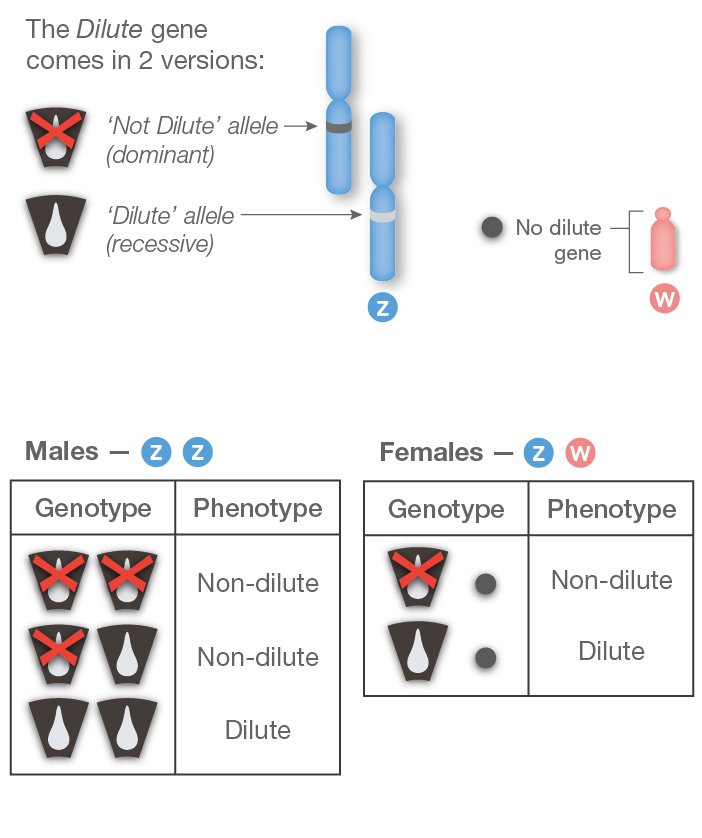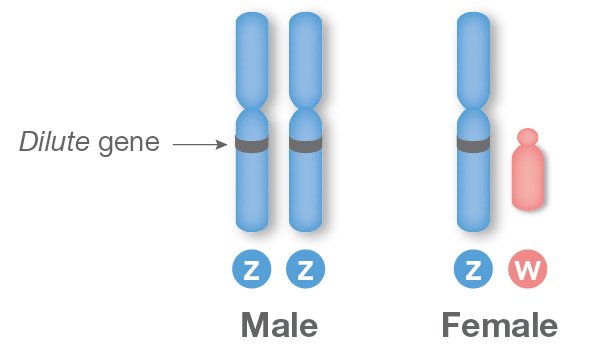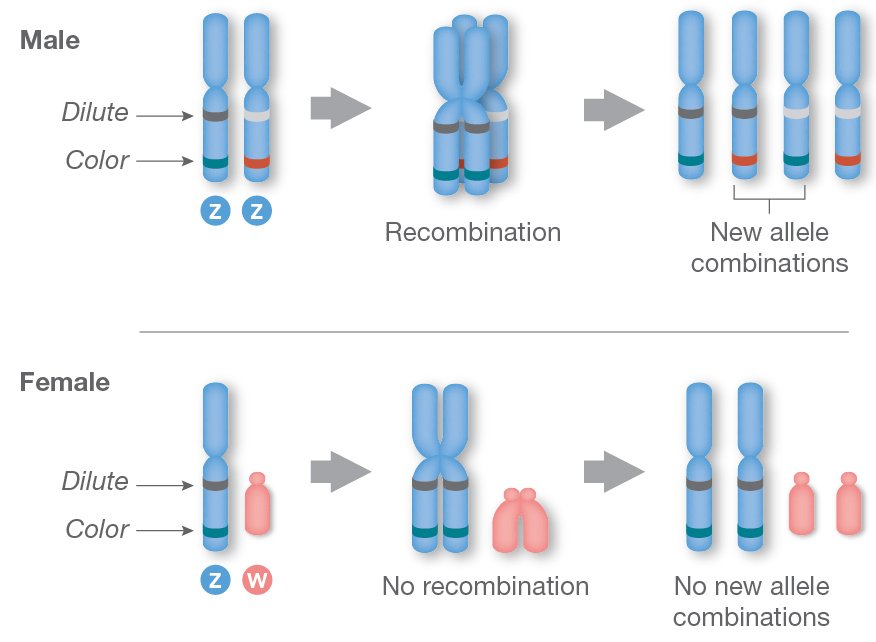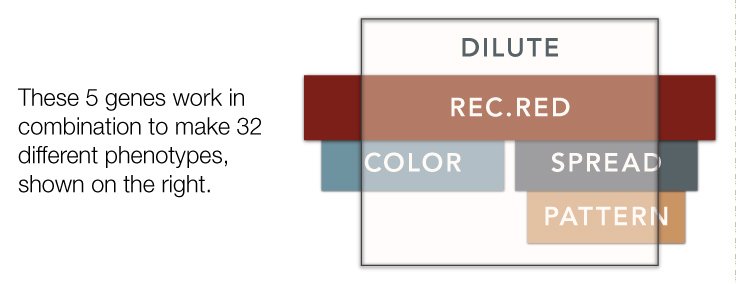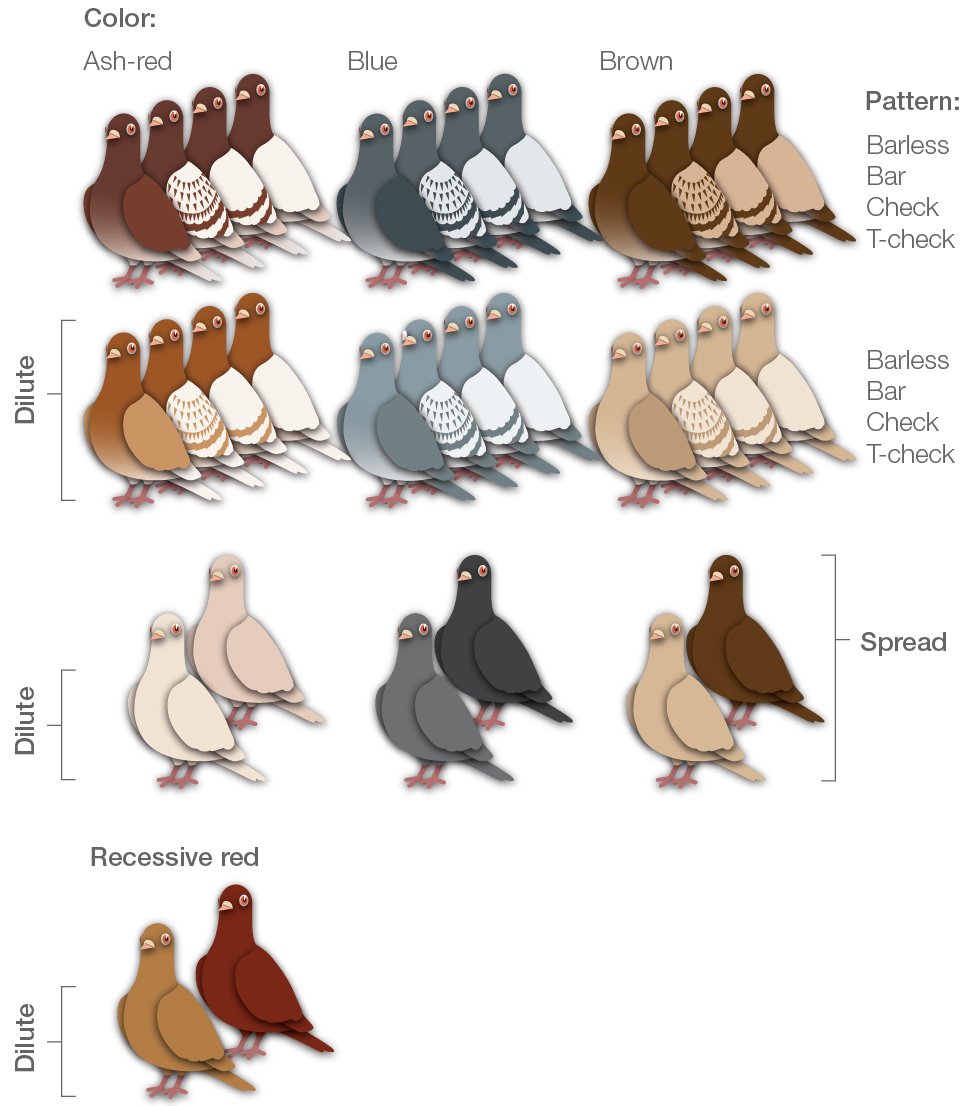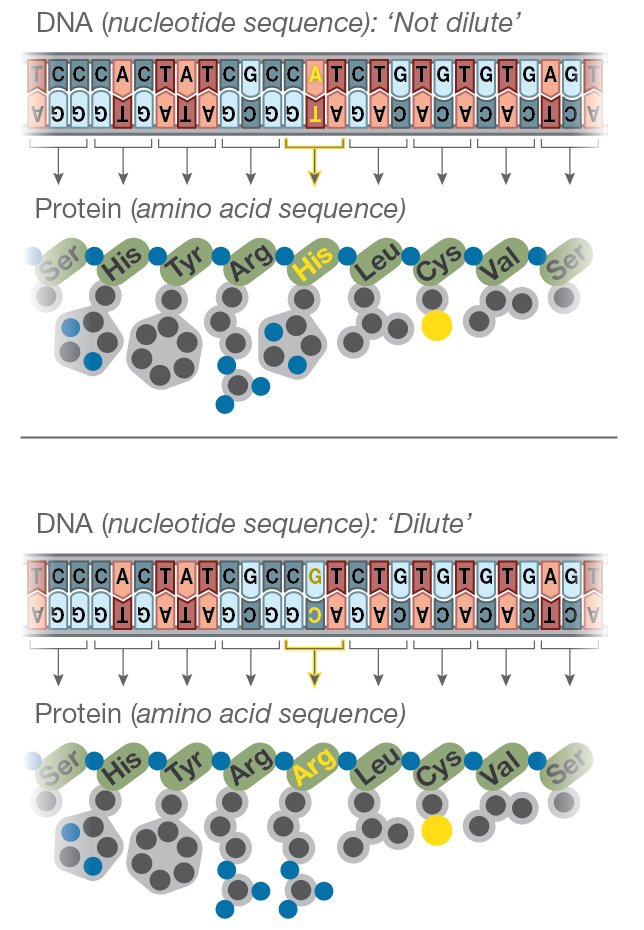In Pigeonetics and in the illustrations to the right, we show that the dilute gene comes in 2 different versions, or alleles: ‘dilute’ and ‘not dilute.’ ‘Not dilute’ is considered wild-type.
In reality, there are at least 2 additional alleles. One allele, called ‘pale,’ produces a phenotype somewhere between dilute and non-dilute. The other allele, ‘extreme dilute,’ produces a phenotype even lighter than dilute.
Males have two alleles of the dilute gene. Their phenotype, or what we see, reflects the more-dominant of the two alleles. The dominance hierarchy of the dilute alleles goes from darkest to lightest: ‘not dilute’ is the most dominant, followed by ‘pale,’ ‘dilute,’ and finally ‘extreme dilute,’ which is the least dominant.
Females have just one dilute allele. That allele alone specifies their phenotype. (Note that a small, dark circle symbolizes the lack of an allele.)
Males inherit a dilute allele from each parent, and they pass one allele or the other to their sons and daughters alike.
Females always inherit their dilute allele from their fathers, and they always pass a copy to their sons. The W chromosome, which has no dilute allele for, always passes from mother to daughter.
